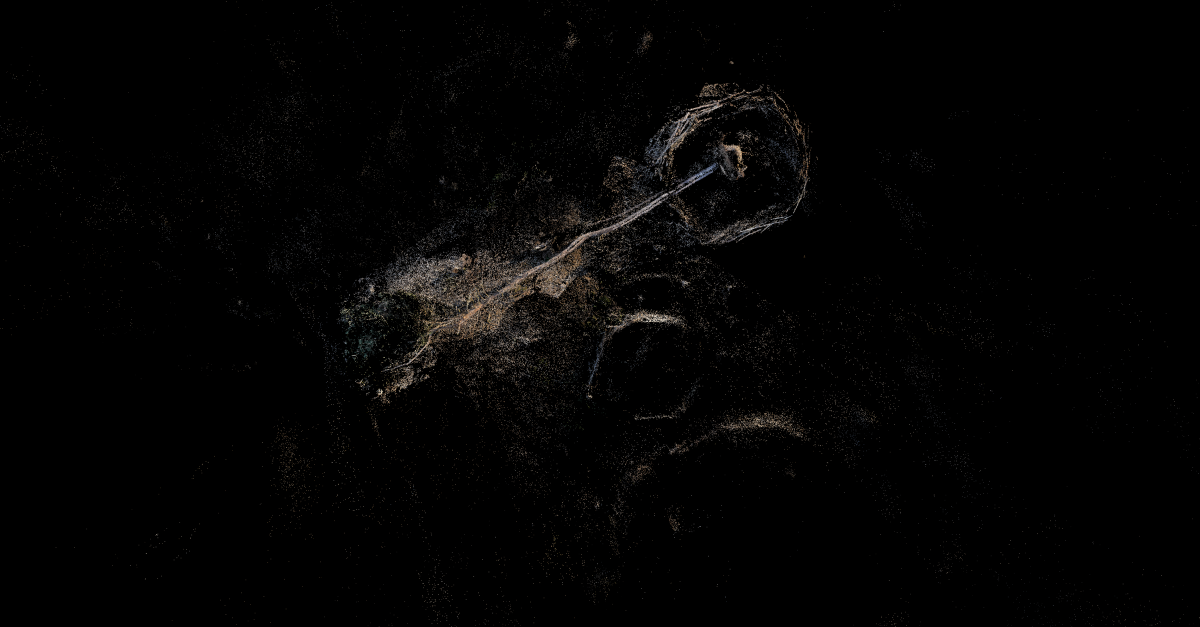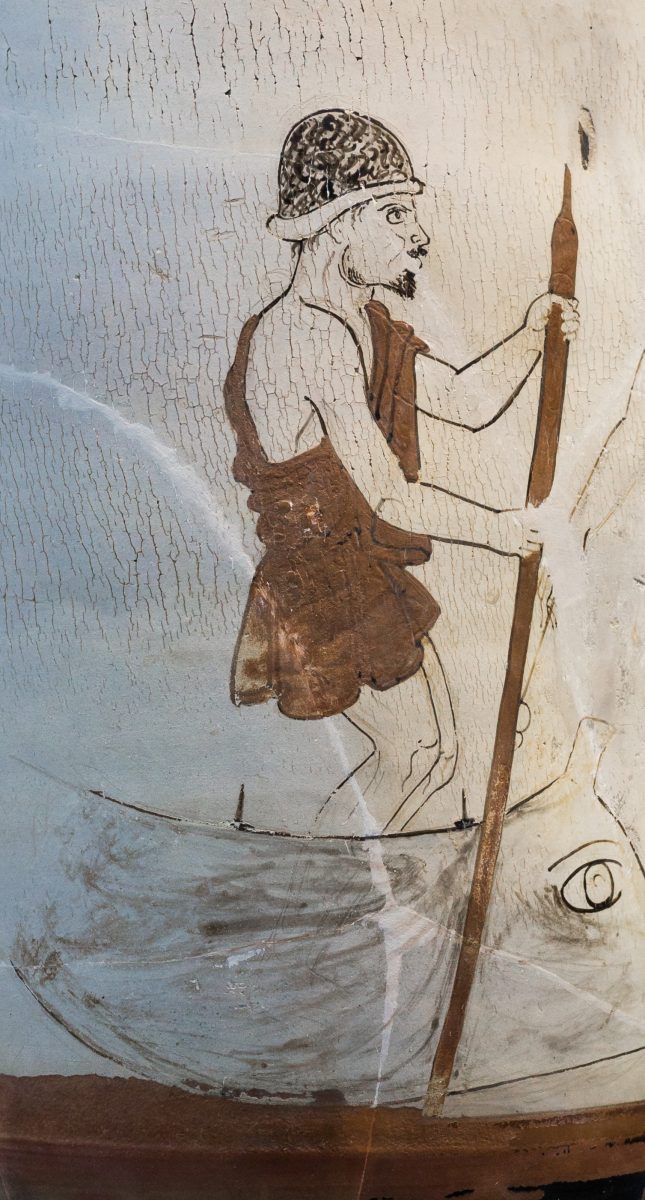One way to keep track of The Plot’s developments is to use a relatively new means of documentation, photogrammetry. With photogrammetry, a large number of photos are being stitched together with software resulting in a digital 3d model, a ‘digital twin’ of the original object.

The process has a performative and ritualistic quality; first, there’s a 360 degrees dance, making sure the object is captured from all angles. On The Plot, it means moving around an area in a circle. Some care is needed, since branches and the uneven surface can easily lead to a stumble.
The camera is pointed at the center, and with every step I take a picture. After the circle is completed, I’ve ended up with between 60 and 120 photos. The camera is then transported about 100 kilometers to my studio, and hooked up to my computer. The photos are copied to a folder, which is where the photogrammetric processing software finds them.
The software imports the photos and attempts to align them based on anchors in the pictures, such as the sky and the background, or typical shapes like branches or three tree trunks. This results in the reconstruction of the positions I took the photos in.
The next step is to build a point cloud. The point cloud is like a ghost, a see through representation of the area, compiled of hundreds of spatial dots. In order to achieve more detail, a so-called ‘dense cloud’ can be generated out of the first sparse cloud.
The cloud is constructed by generating depth maps, after which the program can connect the dots by generating the mesh – it builds a shell from the cloud. It’s impossible to prevent at least some gaps in the data, so it has no choice but to guess the original shape at places. If it fails, it leaves holes or, oppositely, ‘imagines’ extensions where there are none. giving the freshly constructed model the impression of a ruin.
After this, the model is floating into a digital void, dislodged from its physical surroundings; an empty vessel. No ghost, just a shell.
One of the most intriguing characteristics of the photogrammetric model is its organic nature compared to digitally born models, which is due to the photographic texture that is projected on it – reflecting the light and weather circumstances of the time the 360 degrees dance was performed.
This is when the software starts parameterizing the texture atlas, and renders the textures that will give the model its uncanny realistic appearance. Eventually, the model is exported to a format that can be used in other software. It’s stored in the digital archives on a hard drive, where it will linger until it is needed.
Crossing the river Styx
The trajectory is reminiscent of the Greek mythology of Charon, the ferryman helping the souls of the deceased across the river Styx into the realm of the dead. The act of photogrammetry is the transport of an object in the physical coordinates to the virtual x, y, and z axes of 3D software. It’s easy to connect this to the 19th century superstition that making a photographic portrait would chip away a piece of the subject’s soul.
